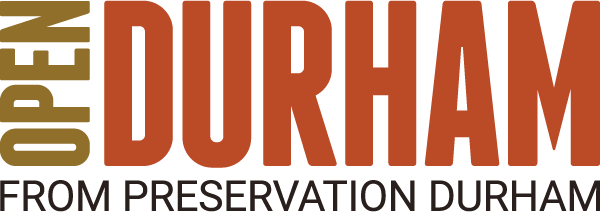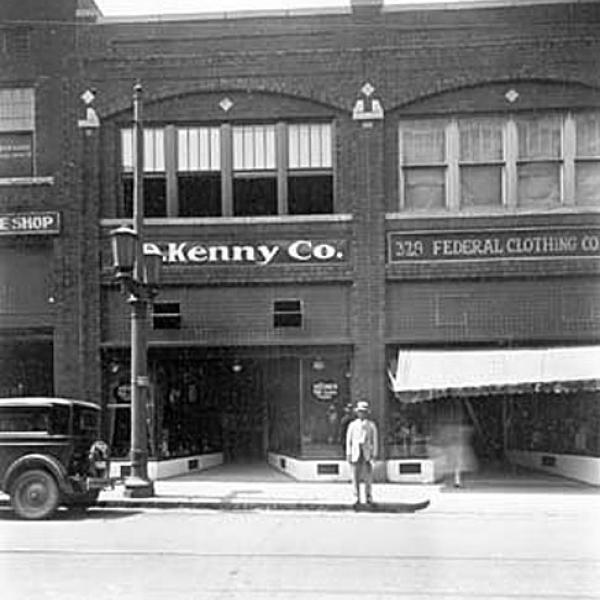From the HPSD tour booklet:
In the years following World War II, America's love affair with the private automobile came into full flower. By 1960, there were finally enough cars so that nearly everybody had access to one. The roads were wide open; we had conquered time and distance.
In the heady drunkenness of our new love, our hands and arms grew into the steering wheel and our legs and feet atrophied. We turned our backs on the od, non-automotive way of things. Our house became mere extensions of the garages we built for our cars. We became besotted with the ugly convenience of the highway commercial srip. If we could not park at the door, hwe would not shop. Downtown was not built with the automobile in mind, so we abandoned it. We abandoned not only downtown the place, but downtown the idea. And because the idea of downtown is an essential feature of our social and cultural heritage as ancient as the Athenian agora and the Roman forum, by abandoning it, we placed our identity as civic people at risk.
Durham was no exception to the American rule. Our downtown grew sick with all the rest. By 1976, things were so bad, we had begun to try to save the patient by amputating the lifeless bits to provide what we believed would be life-giving parking to the few still-viable elements. Of course, this failed. You cannot save anything by destroying it. The old downtown was gone - dead at our own hands.
An entirely new idea was required and, in recent years, a novel and workable construct has emerged. This new concept for downtown is based on two essential principles. The first is people. Downtown must have its own population. It must be its own neighborhood. It can't be just a destination: it cannot return to the department store past. As our roads becorne choked and even acres of asphalt don't provide enough parking, the car is losing its lustre. Time and distance have begun to reconquer us. We need to design places where people can live, work, shop, and play without driving. Downtown is the obvious choice for such a place.
The second element is historic preservation. Civic life needs a cultural identity and it is architecture more than anything else that provides this identity. When planning and architecture becomes subservient to the automobile, civic life suffers. The warehouse store and the big-box pharmacy do not bind us together as a people. In our old downtown, however, badly used as it has been, there is still a staggering wealth of magnificent buildings working together to provide a cultural fabric that is unique to Durham. The new concept of downtown exploits this richness. The big open spaces of the long-empty buildings tempt new owners and designers to experiment and play with exciting ideas for offices, galleries, resaurants, and residential living. The irreplaceable architectural detail and history of the buildings naturally draw people to them.
It is not premature to declare that downtown Durham has been saved. To be sure, there are major problems yet to be solved. Here and there, important buildings are still at risk. But the big risk has been overcome. The debilitating notion that downtown couldn't be saved has been defeated. The new concept of downtown has been tested on both a large and a small scale and proved valid. Blue Devil Ventures and the other pioneers whose properties, homes and projects are on tour today have taken the plunge and their success has emboldened others to follow. The surest confirmation of the new concept of downtown is Liggett's recent decision not to sell off the last of its historic factory buildings at Main and Duke, but to redevelop them into apartments, offices, and shops. What only five years ago would have been seen as a liability is now one of the company's biggest assets. Cigarette manufacturing may have left Durham, but the cigarette manufacturer-turned-downtown-developer has decided to stay.
So, today's tour is a showcase and a celebration of the new downtown, the creation of a new neighborhood, and the preservation of our shared architectural and civic heritage. Our thanks go to the developers, property owners, and neighbors who have not only opened their homes to us today, but have saved downtown for us tomorrow.






Add new comment
Log in or register to post comments.